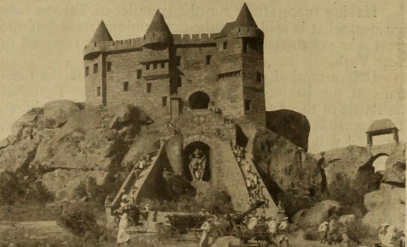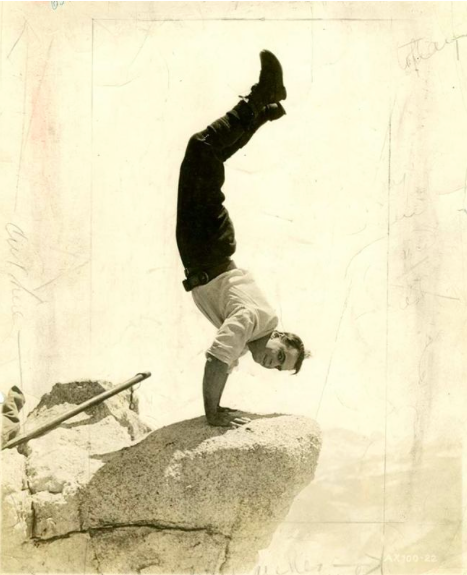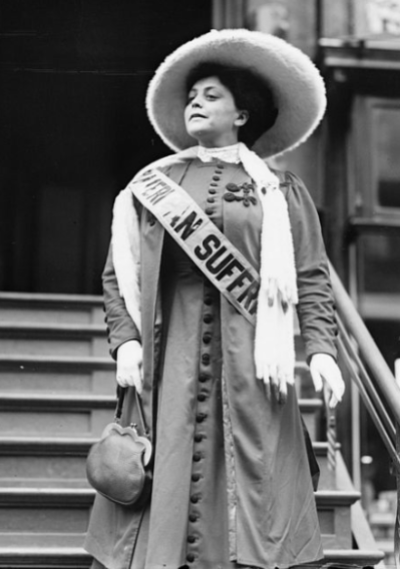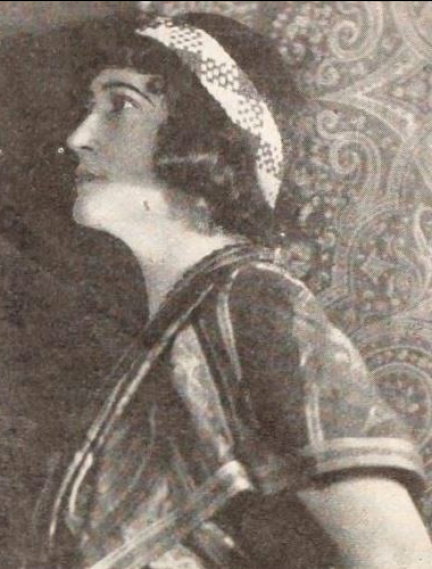The future of film, 1917: Jack and the Beanstalk and Sirens of the Sea
One hundred years ago this week, Grace Kingsley wrote an essay about trends in Hollywood films, entitled “Fashions Change”:
Photoplay fashions come and go just like fashions in hosiery and hats. And the photoplay you like this week, next week may look as funny to you as Aunt Maria’s lace mitts in the old family album…
Vampires are passé. They may burn oriental incense in their boudoirs until the poor creatures put themselves out with the fumes, and we remain unmoved; they bewitch us not with their weird gowns; their most seductive squirms elicit only laughter from us; we don’t believe that men fall for the cigarette advertisement siren, and even if they do we’re sick of seeing her. No, sir, in order to be a big time vamp nowadays, a woman must show she has brains, also a sense of humor…
Then take the wild west drama. William S. Hart is the only man that can get away with it outside the 5-cent houses. He is just in his zenith, but that’s because there is something to Hart and his art besides a pair of chaps and a sombrero…
The ponderous mythical war play is no more, thanks be! No more are we forced to sit through long hours of hypothetical battles in which we have no interest whatever, and in which anemic saints from another and better land inject themselves into worldly affairs…
What is the outlook? In answer let me point to the Pied Piper of Picturedom, Jack and the Beanstalk and Sirens of the Sea, and to the other fanciful film plays that are being done these days. These lift our spirits above the war-soiled world into the realms of pure fantasy.
She was right about the coming and going part: none of the things she complained about stayed gone. Vampires became exotic temptresses like Pola Negri and Greta Garbo. The death of the Western has been announced regularly since then but it keeps getting revived. Those mythical war movies of the 1910s have nothing on the ponderous battles we get in comic book movies now. The trick seems to be knowing which bits of the past are ready to be recycled.
The difference between her essay on the future of film and the ones that are being posted online right this minute is her optimism. She thought that movies would only get better and better!
Kingsley’s favorite film this week was Jury of Fate, directed by Tod Browning. Not at all like the Lon Chaney films that made Browning famous later, his third film had “really fresh charm and ingenuity and quaint quality of the story.” Mabel Taliaferro starred in a dual role of twins Jacques and Jeanne; the father loved the boy and ignored the girl so when Jacques drowns his sister impersonates him. (It must have been impressive: just a few weeks ago, she had complained about too many double roles.) More melodrama ensued, but according the Kingsley, Browning “is to be congratulated on having pared down the story of all the superfluities in the way of action, and yet has given a clear and intriguing yarn.” It’s a lost film.

She reported on a dissatisfied customer at the Garrick Theater:
“Down the aisle with his dad wandered a 4-year-old youngster, but despite his youth he possessed a pair of lungs like a bellows.
“Charlie Chaplin here?” he shrieked.
“No dear, but—“
“Want to see Charlie Chaplin!” roared the boy.
“Well you can’t today, but some day—“
“Well, why ain’t he here?” blubbered the youngster, and he howled all the way down the aisle. “Cos (boo hoo!) – you know very well I wouldn’ ‘a come only I wanted to see Char—“
“If you don‘t quit I’ll spank you!”
“Well if you do, I’ll never bring you here to see him again! So there!”
The young man had a point: why does anyone bother going to the movies if there’s no Chaplin on the bill?
































